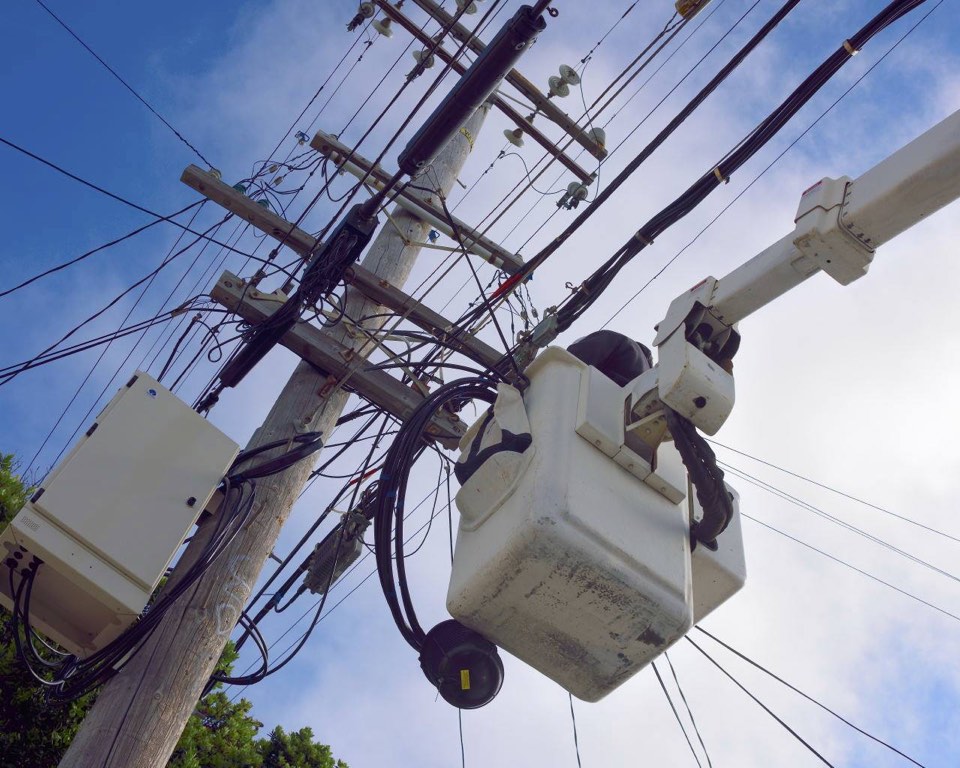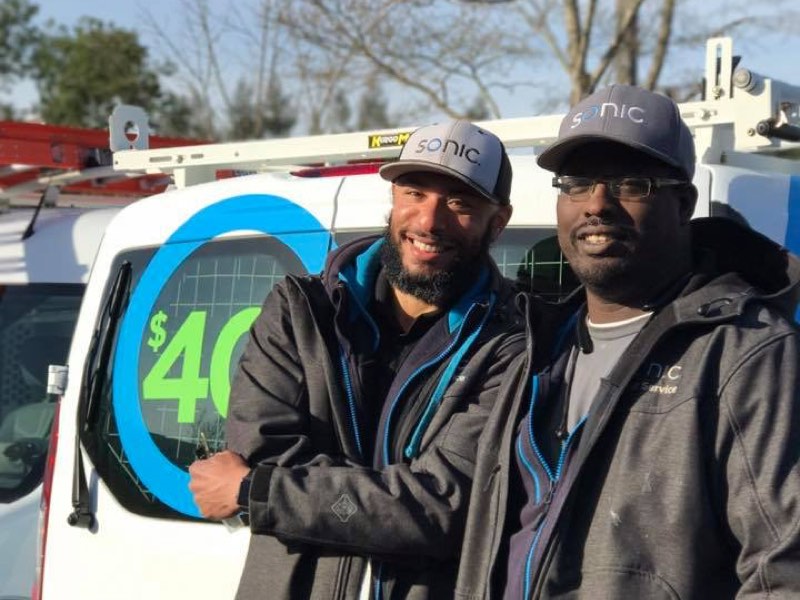![Sonic CEO Dane Jasper Talks Fiber-To-The-Home, Internet Privacy & More [Sponsored]](https://img.hoodline.com/uploads/story/image/38536/sonic_ceo_dane_jasper.jpg?max-h=442&w=760&fit=crop&crop=faces,center)
When it comes to choosing an internet service provider, San Francisco is a hotbed for choice. Unlike many U.S. cities, San Francisco households can compare offerings by major telecoms and a growing selection of homegrown upstarts. And the local thirst for faster and faster speeds at the lowest price makes for fierce competition.
To compete in an industry dominated by a few large players and changing Federal Communications Commission regulations, California's largest independent service provider, Sonic has shifted its business model multiple times since its founding in 1994. After making a name for itself with DSL and hands-on customer service, Sonic is now hustling to bring fiber optic internet to San Francisco households.
To learn more about the Santa Rosa-based company's evolution and current push to hook San Francisco homes up with the fastest internet in the country, we jumped on the phone with Sonic CEO Dane Jasper.
Hoodline: How has Sonic survived such a volatile playing field, and what’s the company’s focus moving forward?
Dane Jasper: Sonic is a company that was pioneering internet access beginning in 1994 with dial-up access and evolved to deliver DSL, to be a competitive carrier and now to build fiber-to-the-home. It has been a volatile field, many of our competitive carriers over the years have fallen by the wayside, but we don’t accept that most American households should be served by only two carriers—and in some cases just one or even none. So Sonic’s goal is to inject an aggressive competitive alternative through a very broad service footprint. Our focus moving forward is on building more fiber-to-the-home networks throughout California.
There’s lots of excitement about Sonic’s new Gigabit Fiber Internet. How does it differ from competitive offerings?
A key differentiation is that it’s fiber-to-the-home—not cable; it’s not a DSL technology. It’s fiber all the way to the house and that gives it capacity at a thousand megabits symmetric in both directions, download speed and upload speed. Additionally, we differentiate through uncapped and unlimited; there are no usage caps. And we include a home telephone line, so a wired telephone line comes out of the fiber, and that includes not only unlimited nationwide calling and all of the voice features, like voicemail and caller ID, but also free calling to fixed lines, or landlines, in over 60 foreign countries. So it’s a very feature rich offering and that starts at $40 a month.

Sonic’s Gigabit Fiber Internet is now available in a handful of San Francisco neighborhoods. Can you shed some light on Sonic’s roll-out plan for the rest of the city?
We have been a bit cagey about that. Obviously we announce markets when they’re open for ordering and beyond that we keep it pretty close to the vest. We began the Sunset, the Richmond and then the Parkside, and neighborhoods in western San Francisco. We’ve launched and begun delivering service in the Mission, and we’re taking pre-orders. But we’re not yet talking about where we go next. We feel it’s important competitively to keep that information a secret for as long as we can.
Which neighborhoods can pre-order now?
The region that we recently opened encompasses southern-eastern San Francisco: Mission, Castro, lower Noe Valley, etc. Portions of those areas, we’re delivering service today. Others, the service will go live in one month, two months, three months. So those are active. They remain in construction or we’re placing some of the final phases of activation. People in those areas in San Francisco, when they put their addresses into our website, they’ll find out whether service is available, whether service is not available or it’s available at a future date. And if it’s a future date, then they’re able to pre-order.
Is the goal to blanket San Francisco, or are there portions of the city that won't be reached?
The objective is to reach everyone we feasibly can. The decision-making process we usually use to prioritize build is a combination of two factors: construction cost and uptake.
Construction cost is driven by construction methodology as well as density and market-specific factors, like situations where you have poles that we can’t put our facilities on and things like that.
The second factor is uptake. Regions that have higher quantities of Sonic customers, that’s indicative for us about the level of interest in Sonic and our services. An area that might have a higher construction cost but also might have a higher uptake might be prioritized by us ahead of an area with lower construction cost but little uptake. So it’s the intersection of those two variables that drives our prioritization.
In San Francisco it’s also worth mentioning that construction to households is done by utilities instead of overhead aerial wiring. The city of San Francisco does not today permit new underground utility construction.
They do not allow any trenchless technologies, including directional boring or micro trenching. So it isn't possible for a service provider to serve a household that might be in the Marina, or portions of Pacific Heights, and areas where utilities are underground.
This is something the San Francisco Department of Public Works is working on. We’re communicating with them on a regular basis, so there may be changes in this in the future. But as it is now, it really doesn't allow a new carrier to build in San Francisco.

When it comes to installing fiber infrastructure in San Francisco, what other challenges does Sonic face?
The second challenge is it's a city with a lot of the pre-existing utilities, and there are situations where there isn't capacity on the utility poles in an aerial environment. So there are spots where there are holes in the network in the neighborhoods that we’re serving, where we’re working our way down a street and reach a utility pole that’s overloaded and we can’t continue.
So that’s the other significant challenge. Those poles that are overloaded, that’s a safety issue. They are slated to be reinforced or replaced, and eventually when those poles are reinforced or replaced, then we’ll have an opportunity to fill those gaps.
We hear you’re pretty active in Sonic’s forum channels. What do you say to customers who are struggling to wait for fiber optic internet to reach their homes?
In our organization, we’re working as quickly as we can to scale up. There are a lot of challenges behind the scenes. But, in our defense, over the span of the last six months we’ve more than doubled our pace of construction. And we have 420 employees here today. In 2016, we hired 188 people. The vast majority of those are field force, installers and construction crew, as we scale this up—as well as sales and marketing and customer service and billing. This time a year ago, on a given day in San Francisco we might have 15 trucks, and today we might have 70. So, the pace of this construction is increasing.
We definitely hear the sort of criticism any business would be lucky to have, and that is, ‘I really want to buy your product, get here already.’ So what I’ll say is, ‘As an organization, we’re scaling to meet that demand, and working faster and faster to increase the pace of construction and scope of our network in San Francisco and beyond.’
I’m very excited about the opportunity, and it’s really exciting to see the feedback from the public on the product. So, as we grow and more customers sign up, that allows us to hire more employees, that allows us to build even faster and serve more customers. It’s a real positive feedback loop that’s working really well.

You have been a very vocal opponent of lawmakers’ repeal of internet privacy regulations and attempts to roll back net neutrality rules. In what ways do you expect the relaxing of these regulations to affect Bay Area consumers?
We were mentioned by Nancy Pelosi in a letter she put out a few weeks ago on network neutrality. We’ve been recognized by the Electronic Frontier Foundation year after year after year, as, nationwide, the internet access provider with the best practices. So the issues of privacy in particular, but also neutrality, have been very fresh for many years.
The loss of privacy regulations and the potential loss of net neutrality will not affect our product, our policies and practices. Our approach to the market will remain consistent, but the relaxing of these regulations may affect consumers of other carriers who begin to take advantage of the opportunities the relaxed privacy regime were for or take advantage of a non-neutral network environment.
On the privacy side, it remains to be seen what that becomes, but what seems likely is that carriers would analyze consumers' web browsing behavior and partner with marketers to use that—what we consider private information.
And on the neutrality side, by treating traffic differently from different sources, carriers could monetize that. In other words, perhaps they are able to charge Sony Playstation or Microsoft Xbox folks something for lower latency for better gaming, and there would be a financial exchange behind the scenes. We see that as creating slow lanes in order to sell fast lanes, and I think that’s negative for not just internet access consumers but, in the context of the San Francisco Bay Area, for the startup ecosystem. If you think about augmented reality, virtual reality, online gaming, applications which are high bandwidth, and if you think about the technology companies that are focused on those, how will an environment without assured net neutrality affect their prospects. And that’s what’s disconcerting but remains to be seen.
What's your advice to consumers who are beginning to worry about these changing regulations?
The FCC is taking public comment right now on net neutrality. The privacy topic has already been overturned by Congress. And California is taking up legislation around privacy. So, I think that consumers should continue to take interest in the topics of regulation and privacy, whether that’s the FCC or Congress or the state.
Also, it's a good opportunity to choose service providers that align with consumers values. And there are many beyond Sonic that support good strong policy.
For more information, visit www.sonic.com or call 1-855-757-6111.
[Editor's Note: This is a sponsored post. The interview, conducted by freelance writer Brittany Hopkins, has been lightly edited for clarity and brevity.]









